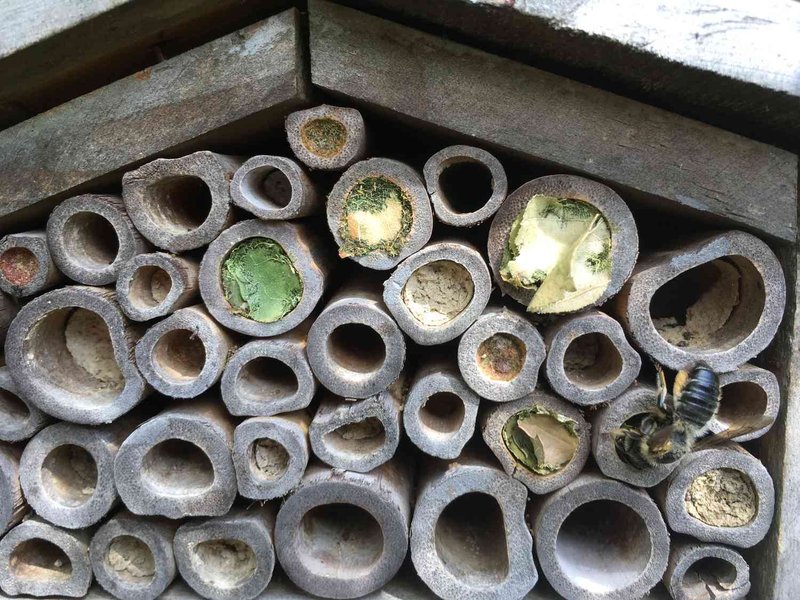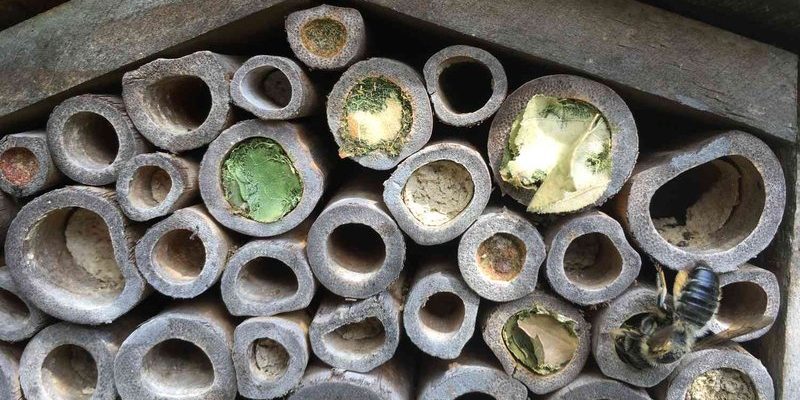
Attracting leafcutter bees to your garden isn’t just about helping them out; it’s also a great way to boost plant pollination. These bees are amazing pollinators and can help increase the health and yield of your flowers and vegetables. So, if you want a vibrant garden buzzing with life, you’re in the right place. Let me explain how you can create a welcoming habitat for these helpful creatures.
What Are Leafcutter Bees?
Leafcutter bees, belonging to the family Megachilidae, are solitary bees. Unlike honeybees, which live in large colonies, leafcutter bees prefer to live alone. They are most commonly found in North America and are easily identified by their unique behavior of cutting leaves, petals, and even some soft plant materials.
These bees use the pieces they cut to create nests, usually in preexisting holes in wood or even in the ground. They are excellent pollinators, and because of their size and the way they move, they can access a variety of plants that other bees might overlook. So, not only do they get to build their homes, but they also help your garden thrive while they’re at it!
Creating the Ideal Habitat
To attract leafcutter bees, you’ll need to create a suitable habitat. Here’s the thing: they prefer environments that mimic their natural surroundings. Think about adding features like a few fallen branches, bare patches of soil, or even a small pile of garden debris.
One idea is to leave some areas of your garden less manicured. Letting some of the grass grow wild or keeping a patch of native plants can really make a difference. Leafcutter bees like to nest in soft, sandy soils, so if you have a sunny spot in your garden, consider leaving it undisturbed. Over time, these small changes can encourage them to make your garden their home.
Planting for Leafcutter Bees
Now that you’ve got a habitat in mind, the next step is to plant flowers that leafcutter bees love. They are particularly attracted to brightly colored, fragrant blooms. Here’s a short list of plants they adore:
- Lavender
- Sunflowers
- Black-eyed Susans
- Bee balm
- Clover
These plants not only provide nectar and pollen, but they also create a colorful display in your garden. By incorporating these flowers, you’re setting up a buffet that will surely catch the attention of passing leafcutter bees. Plus, think of the beautiful blooms you’ll enjoy in return!
Using Bee Houses
Have you ever thought about providing a cozy home for these bees? Installing a bee house is a fantastic way to attract leafcutter bees to your garden. These specialized structures offer an inviting space for them to nest. Bee houses can be made from wood, bamboo, or even hollowed twigs.
When placing your bee house, try to position it in a sunny spot, facing south or southeast. This helps to keep the home warm. Also, ensure there’s a sheltered area nearby so the bees can easily access their new digs. You might find that once you set up a bee house, it quickly becomes a popular hangout spot!
Avoiding Pesticides
If you’re serious about attracting leafcutter bees, it’s crucial to rethink your approach to pest control. Many common pesticides can harm bees, including leafcutters. If you must use pesticides, opt for bee-friendly options that won’t harm these important pollinators.
Instead of reaching for that spray can, consider natural alternatives like neem oil or insecticidal soaps. These can effectively manage pests without endangering the bees. Also, always apply any treatments in the evening or early morning when bees are less active to minimize harm. After all, a thriving bee population is beneficial for your plants and the overall health of your garden!
Be Patient and Observe
Attracting leafcutter bees to your garden is a process that requires a bit of patience. You might not see them right away, and that’s perfectly normal! These bees can take some time to find your garden, especially if it’s new to them.
While you wait, take the opportunity to observe your garden. You might start seeing signs of leafcutter bees, like tiny circular cutouts in the leaves of your plants or even the bees themselves flitting about. Watching them work can be fascinating. You’ll feel a sense of pride knowing you’ve created a welcoming space for these incredible pollinators.
Enjoying Your Bee-Friendly Garden
Once you’ve attracted leafcutter bees, it’s time to enjoy the benefits they bring. You may notice improved pollination in your flowers and vegetables, which can lead to healthier plants and bigger yields. Plus, having bees buzzing around adds a lovely, lively atmosphere to your garden.
Remember that a bee-friendly garden is a healthy garden. With just a few small steps, you can make a big difference in supporting local wildlife. Who knew that inviting these little ninjas could be so rewarding?
In conclusion, attracting leafcutter bees to your garden is not just about enhancing pollination; it’s about fostering a thriving ecosystem. Whether through the right plants, creating a welcoming habitat, or avoiding pesticides, every action counts. Dive into the world of these industrious bees, and you might just find that they add a new layer of joy to your gardening experience. Happy gardening!

